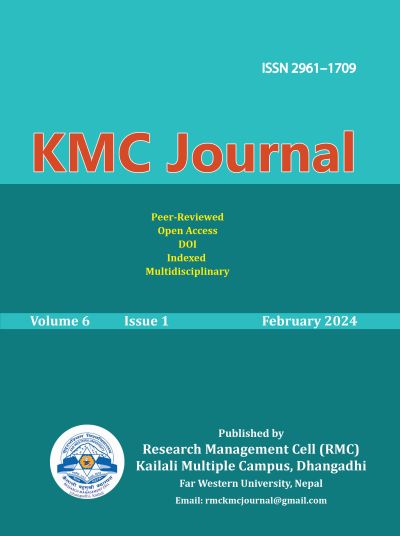Risk Perception and Protective Health Measure Regarding COVID-19 among Nepali Labour Migrants’ Returnee from India
DOI:
https://doi.org/10.3126/kmcj.v6i1.62364Keywords:
Pandemic, migrant worker, preventive behaviour, relationshi, risk perceptionAbstract
Thousands of Nepali migrant workers returned home from India due to the impact of the COVID-19 pandemic. This cross-sectional study examines the association between risk perception and protective behaviour regarding COVID-19 in returnee migrant workers. The study used opportunistic sampling and 384 participants, based in a quarantine center on return from India, volunteered. Using the health belief model (HBM) as a theoretical framework, a structured interview questionnaire was designed and applied as the key data collection tool. Three health workers were interviewed face-to-face. The study showed that the perceived risk of COVID-19 among participants was medium to low. Participants perceived few barriers and had low self-efficacy levels compared to other constructs. This study further showed that participants were more likely to follow a range of protective health behaviours, but not found all. The study revealed a significant association between all risk perception constructs and protective behaviours (p=< 0.05). This study accordingly highlighted a significant relationship between the respondents' risk perception level and protective health behaviours. The study envisaged that public awareness of risk to the people who returned from India is essential to increase risk perception during the outbreak.
Downloads
Downloads
Published
How to Cite
Issue
Section
License

This work is licensed under a Creative Commons Attribution-NonCommercial 4.0 International License.
This license allows reusers to distribute, remix, adapt, and build upon the material in any medium or format for noncommercial purposes only, and only so long as attribution is given to the creator.




